The prevalence of Chlamydia trachomatis infection in Australia: a systematic review and meta-analysis
- PMID: 22583480
- PMCID: PMC3462140
- DOI: 10.1186/1471-2334-12-113
The prevalence of Chlamydia trachomatis infection in Australia: a systematic review and meta-analysis
Abstract
Background: Chlamydia trachomatis is a common sexually transmitted infection in Australia. This report aims to measure the burden of chlamydia infection by systematically reviewing reports on prevalence in Australian populations.
Methods: Electronic databases and conference websites were searched from 1997-2011 using the terms 'Chlamydia trachomatis' OR 'chlamydia' AND 'prevalence' OR 'epidemiology' AND 'Australia'. Reference lists were checked and researchers contacted for additional literature. Studies were categorised by setting and participants, and meta-analysis conducted to determine pooled prevalence estimates for each category.
Results: Seventy-six studies met the inclusion criteria for the review. There was a high level of heterogeneity between studies; however, there was a trend towards higher chlamydia prevalence in younger populations, Indigenous Australians, and those attending sexual health centres. In community or general practice settings, pooled prevalence for women <25 years in studies conducted post-2005 was 5.0% (95% CI: 3.1, 6.9; five studies), and for men <30 years over the entire review period was 3.9% (95% CI: 2.7, 5.1; six studies). For young Australians aged <25 years attending sexual health, family planning or youth clinics, estimated prevalence was 6.2% (95% CI: 5.1, 7.4; 10 studies) for women and 10.2% (95% CI: 9.5, 10.9; five studies) for men. Other key findings include pooled prevalence estimates of 22.1% (95% CI: 19.0, 25.3; three studies) for Indigenous women <25 years, 14.6% (95% CI: 11.5, 17.8; three studies) for Indigenous men <25 years, and 5.6% (95% CI: 4.8, 6.3; 11 studies) for rectal infection in men who have sex with men. Several studies failed to report basic demographic details such as sex and age, and were therefore excluded from the analysis.
Conclusions: Chlamydia trachomatis infections are a significant health burden in Australia; however, accurate estimation of chlamydia prevalence in Australian sub-populations is limited by heterogeneity within surveyed populations, and variations in sampling methodologies and data reporting. There is a need for more large, population-based studies and prospective cohort studies to compliment mandatory notification data.
Figures
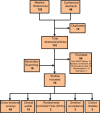
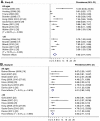
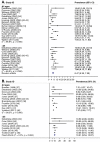

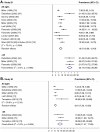
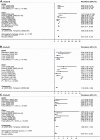
References
-
- Newman L, Stirzaker S, Knuckey D, Robinson K, Hood J, Knope K, Fitzsimmons G, Martin N, Siripol S, Gajanayake I, Kaczmarek M, Barr I, Hii A, Foxwell R, Owen R, Wright P, Fitzsimmons G, Sanders L, Barry C, Barker S, Ormond J, Liu C. Australia’s notifiable disease status, 2008: annual report of the National Notifiable Diseases Surveillance System. Commun Dis Intell. 2010;34:157–224. - PubMed
-
- National Notifiable Diseases Surveillance System, http://www9.health.gov.au/cda/source/cda-index.cfm.
-
- Cates W, Wasserheit JN. Genital chlamydial infections: Epidemiology and reproductive sequelae. Am J Obstet Gynecol. 1991;164:1771–1781. - PubMed
-
- Haggerty CL, Gottlieb SL, Taylor BD, Low N, Xu FJ, Ness RB. Risk of sequelae after Chlamydia trachomatis genital infection in women. J Infect Dis. 2010;202:S134–S155. - PubMed
-
- Schachter J. In: Sexually Transmitted Diseases. Holmes K, Sparling P, Stamm W, Piot P, Wasserheit J, Corey L, Cohen MS, editor. McGraw-Hill, New York; 2008. Biology of Chlamydia trachomatis; pp. 555–574.
Publication types
MeSH terms
LinkOut - more resources
Full Text Sources
Medical
Miscellaneous

